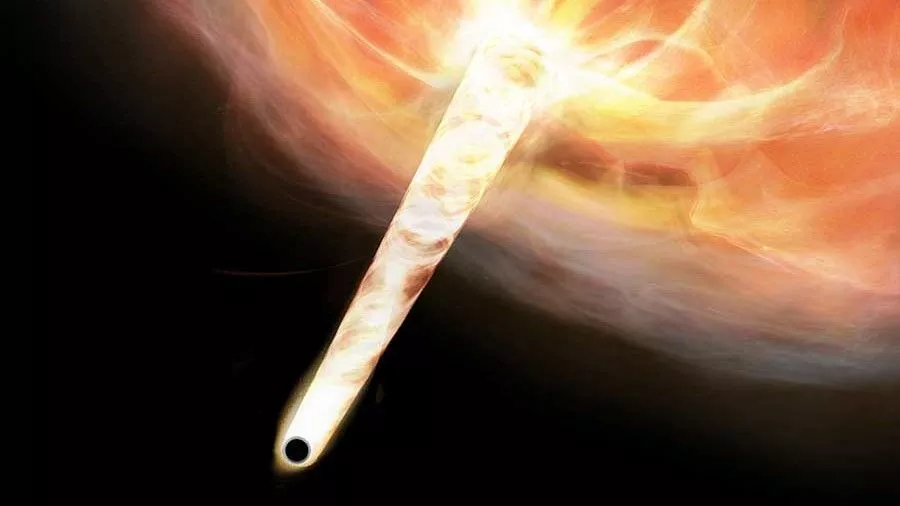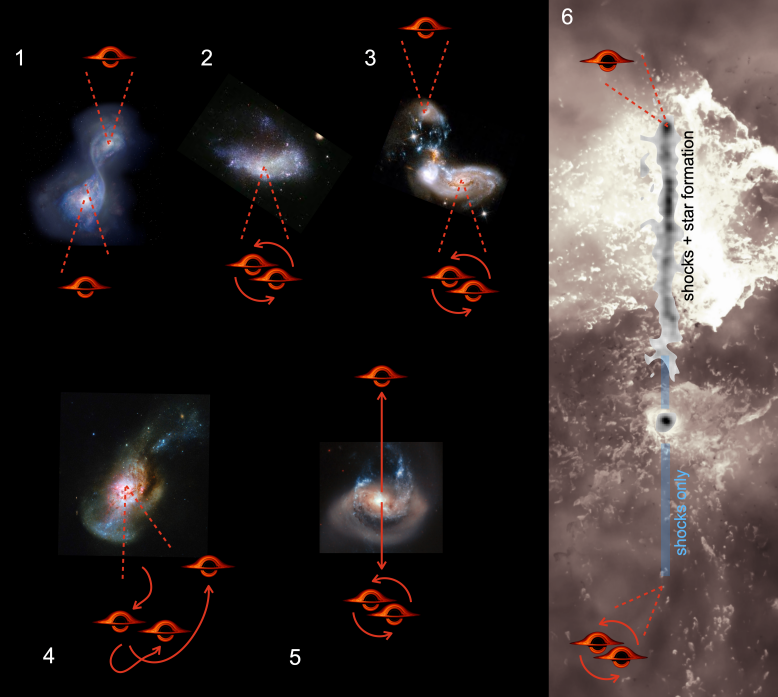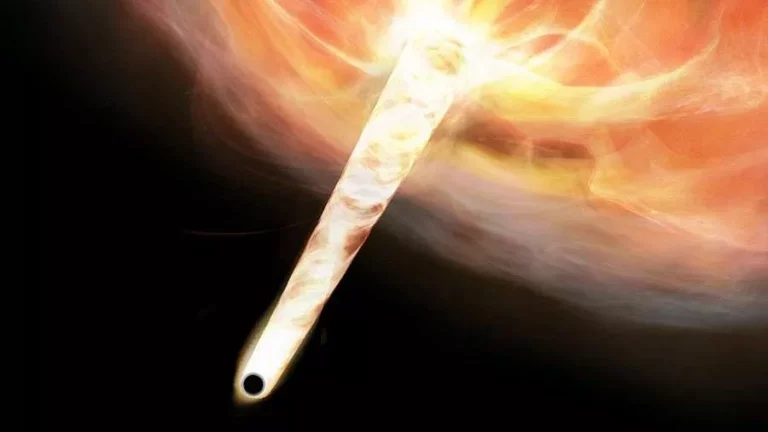A black hole, 20 million times the size of the sun, has been discovered hurtling through space with a wake of newly formed stars in its path, earning it the nickname “Runaway”.
Astronomers have discovered a “runaway” black hole, potentially the first observational evidence that supermassive black holes can be ejected from their host galaxies.

A group of astronomers has identified a runaway supermassive black hole that appears to have been expelled from its galaxy and is now travelling through space, trailed by a stream of stars. The team’s findings, which were recently published on the pre-print server arXiv.org and are due to be released in The Astrophysical Journal Letters, represent the first direct evidence that supermassive black holes can be ejected from their host galaxies and left to wander through the cosmos.
Using the Hubble Space Telescope to study the dwarf galaxy RCP 28, which is situated around 7.5 billion light-years away, the researchers detected the runaway black hole as a luminous streak of light.
Upon further examination, it was determined that the streak spans more than 200,000 light-years, which is approximately twice the width of the Milky Way. It is believed to be composed of compacted gas that is actively generating stars, trailing behind a black hole that is estimated to weigh 20 million times that of the sun. The black hole is moving away from its original galaxy at a staggering speed of 3.5 million mph (5.6 million km/h), equivalent to around 4,500 times the speed of sound.
The researchers note that the streak’s trajectory points directly towards the center of a galaxy, where a supermassive black hole would typically be found.
“We found a thin line in a Hubble image that is pointing to the center of a galaxy,” lead study author Pieter van Dokkum, a professor of physics and astronomy at Yale University, told Live Science. “Using the Keck telescope in Hawaii, we found that the line and the galaxy are connected. From a detailed analysis of the feature, we inferred that we are seeing a very massive black hole that was ejected from the galaxy, leaving a trail of gas and newly formed stars in its wake.”
Confirming the tail of an ejected black hole
Most, if not all, large galaxies are known to harbor supermassive black holes at their cores. These black holes can sometimes release astrophysical jets, which are high-speed streams of material that can appear as luminous streaks similar to the one observed by the team. However, upon close examination, the researchers determined that this was not the case.
The team discovered that the streak lacked the characteristic features of an astrophysical jet. While astrophysical jets usually weaken as they move away from their source, the potential supermassive black hole trail in question actually gains strength as it moves farther from its apparent point of origin within the galaxy. Additionally, astrophysical jets typically diverge from their source, while this particular streak remained linear.
Based on these observations, the team concluded that the most likely explanation for the streak is a supermassive black hole breaking through the gas that surrounds its home galaxy and compressing it enough to induce star formation in its wake.
“If confirmed, it would be the first time that we have clear evidence that supermassive black holes can escape from galaxies,” van Dokkum said.

Black holes on the move
After confirming the existence of the runaway supermassive black hole, astronomers are left with the question of how such an immense object could have been expelled from its host galaxy.
“The most likely scenario that explains everything we’ve seen is a slingshot, caused by a three-body interaction,” van Dokkum said. “When three similar-mass bodies gravitationally interact, the interaction does not lead to a stable configuration but usually to the formation of a binary and the ejection of the third body.”
The presence of a runaway supermassive black hole could suggest that it was formerly part of a rare binary system of supermassive black holes. The introduction of a third supermassive black hole during a galactic merger may have caused one of the occupants to be expelled. It is uncertain how frequently these massive runaways occur, and while the concept of ejected supermassive black holes has been theorized for half a century, there has been no definitive evidence until now.
” van Dokkum said “Most theorists think that there should be many out there.”
Further observations with other telescopes are needed to find direct evidence of a black hole at the mysterious streak’s tip, van Dokkum added.
Originally published on LiveScience.com
Do not forget to share your opinion with us to provide you with the best posts !




0 Comments